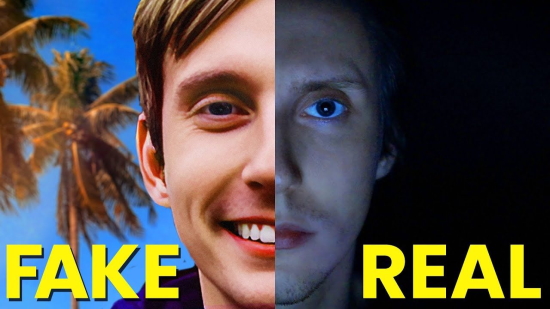[We’re back after a two-week hiatus… This story from PetaPixel illustrates the rapid evolution of AI and its ability to create convincing presence experiences for both consumers and creators. See the original story for five more images and Kyle Vorbach’s 10:15 minute video (also available on YouTube). –Matthew]

Man Fakes an Entire Month of His Life Using AI Generated Photos
By Jaron Schneider
December 14, 2022
Self-described writer and director Kyle Vorbach realized that by specifically training the Stable Diffusion artificial intelligence (AI) image generator, he could create realistic photos that never happened. So he did, and faked a whole month of his life.
In his expertly edited video, Vorbach says that he originally went down this rabbit hole when he needed a new profile picture last October, but was struggling to get a good result. So, after he had previously proven he could create believable images of his dog with a fine-tuned, local version of Stable Diffusion, he decided to try it with his own face.
Usually, AI-generated faces of people are difficult to believe, as the “uncanny valley” effect is extremely strong. But after playing with the program for a while and learning that it gave better results if it was told to use a celebrity that looked like the person that was being made and not the actual person (in his case, Ryan Gosling), he created an incredible photo of himself.
“Easily one of the best pictures I’ve ever taken, and I never even had to leave my bedroom,” Vorbach says.
After his success, he decided to push it even further.
“I generated my Halloween costume. I used AI to generate an entire fake trip to New York where I met up with my friend, who was also generated with AI. Everyone was believing my pictures. That’s when thing started to get weird,” he says.
The more he used the program, the more he realized it was making photos that weren’t as engaging as reality.
“Although I had successfully tricked everyone I know, my pictures were getting less and less likes, I noticed. I realized if you don’t know my posts are fake, then they just seem incredibly boring,” Orbach explains.
“Then it hit me. If I’m already generating my pictures, why not generate a whole new life. A life where I moved back to LA, a life where i lived in a really nice apartment, and so did my dog. A life where I could afford a really nice car. A life where my career finally takes off. A life where I might even run into a random celebrity. A better life.”
Vorbach proved that he could create an entirely fake existence online that was, incredibly, believable.
“When I started this project it was for fun, but it is a lot of work sifting through thousands of images all day and all night staring at a machine’s idea of your face until you don’t even know what you look like anymore,” he says.
“Every time I got a like on one of those pictures, I felt those endorphins like it was me. Like someone I know liked a picture of me. Eventually, I didn’t know where I stopped, and Ryan Gosling person began.”
Vorbach’s successful experiment proves a couple of things. First, it is possible to train AI to be so good that it can mimic what a real life would be like. But second, in order to get it to be that good, it takes as much time as going out and actually living that real, happy life.
AI-generated imagery is still evolving, and there are a great many questions about it that remain unanswered, both legally and ethically. Considering that just a few short months ago these programs were only able to create vaguely interesting nightmarish figures of people and now are able to fully mimic a real person’s life, where they go next is anyone’s guess.
|